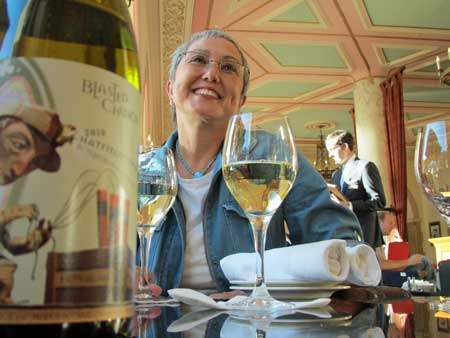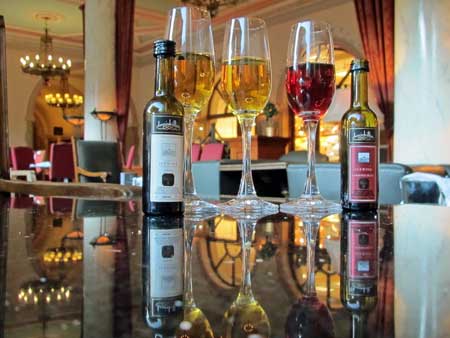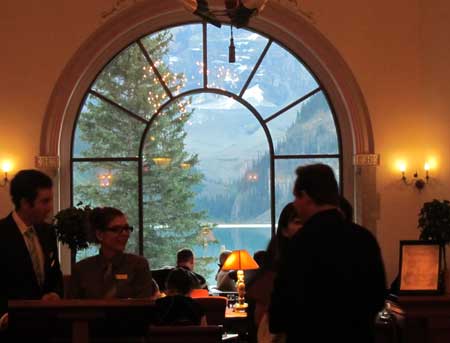VintageTexas Sunday ‘Cyclopedia of Wine: Canadian Ice Wine
My wife and I are up in the western Canadian high country on a little business and pleasure in Lake Louise (in Baniff National Park). I bet that you already know that Canada is known for ice. But did you know that it is also known for ice wine.
Ice wine, or as the Germans call it, Eiswein, is a wine produced from frozen grapes left on the vine until after the first hard freeze. In the freezing process the water freezes and forces the grape’s sugars, acids and other dissolved solids into a separate and very concentrated liquid phase. This hyper-concentration of sugar and acids is the “secret” to the amazing sweet-and-brisk characteristic that ice wines offer. The opportunity for an ice wine harvest gives ice wine its characteristic refreshing sweetness balanced by high acidity.
In an historical scene, there are indications that frozen grapes were used to make wine in Roman times. However, details as to the winemaking and description of these wines are unknown.
At the Fairmount Chateau Lake Louise, dinner for my wife and I was more of an early evening affair with Caesar salads and a charcuterie of smoked game meats, pickled vegatables and cheeses, including venison sausage, duck breast and elk. The wines, as I normally chose, were local and from Canada’s Okanagan valley in British Columbia. The first was Blasted Church Hatfield’s Fuse, a blend of white seven varietals (driven by Gewürztraminer) that benefited from crisp acidity, good viticulture and a winemaker’s hand at blending. From there I focused on the deep, smoky qualities of the charcuterie and found a Mission Hill Cabernet-Merlot blend, a surprisingly big wine opening with dark fruits, herbs, smoke, and again the crisp acidity so common in Canadian wines.
After the meal, I re-discovered the wine list and found a flight of three Inniskillin ice wines offered: Vidal, Riesling and Cabernet Franc. They were more dessert than any pastry chef could possibly concoct. They were the sweet nectar of frozen grapes. The Vidal highlighted sweet orange citrus, apricots and honey. The Riesling showed steely minerality supporting candied fruits strong on grapefruit and peach. The Cabernet Franc was all red fruit dominant in strawberries.
Canadian ice renowned for its rich flavors, unsurpassed smoothness and refreshing acidity were present for our taking last night. This treat commanded a premium price, but was worth the experience. The justification…These wines are expensive to make partly due to the risk of the extremely late harvesting. Most things that can happen for the both winegrower and winemaker in this situation can go wrong: wind, rot, hail, sleet, and the appetite of hungry birds. Yet further, the yield of grapes to make ice wine is very small compared to that of a normal table wine grape harvest. Three or more kilograms of grapes will only produce one 375-ml bottle of finished ice wine, while the same weight of fruit, normally harvested, will provide up to 10 times that amount of table wine.
That said, I have no regrets having paid the price for Canadian ice wine and having savored it’s lusciousness in the delightful surroundings of Lake Louise, a pure and pleasurable Canadian experience.




Inniskillin makes some wonderful ice wines. Nicely done, Russ.
Jeff,
Thanks for the comment. Ice wine is really a very special type of wine, not cheap, but well worth the price of the experience.
Dear Russ… Thank you for this great post. It’s great to hear such positive comments about Icewine. I work for a winery in Niagara-on-the-Lake and my job is to sell our Icewines all over the world. I hope to one day have our products available in the beautiful state of Texas. We appreciate your support of this niche category. We need more posts like these in order to help spread the word about the beauty and uniqueness of Canadian Icewine. Thanks for this post!